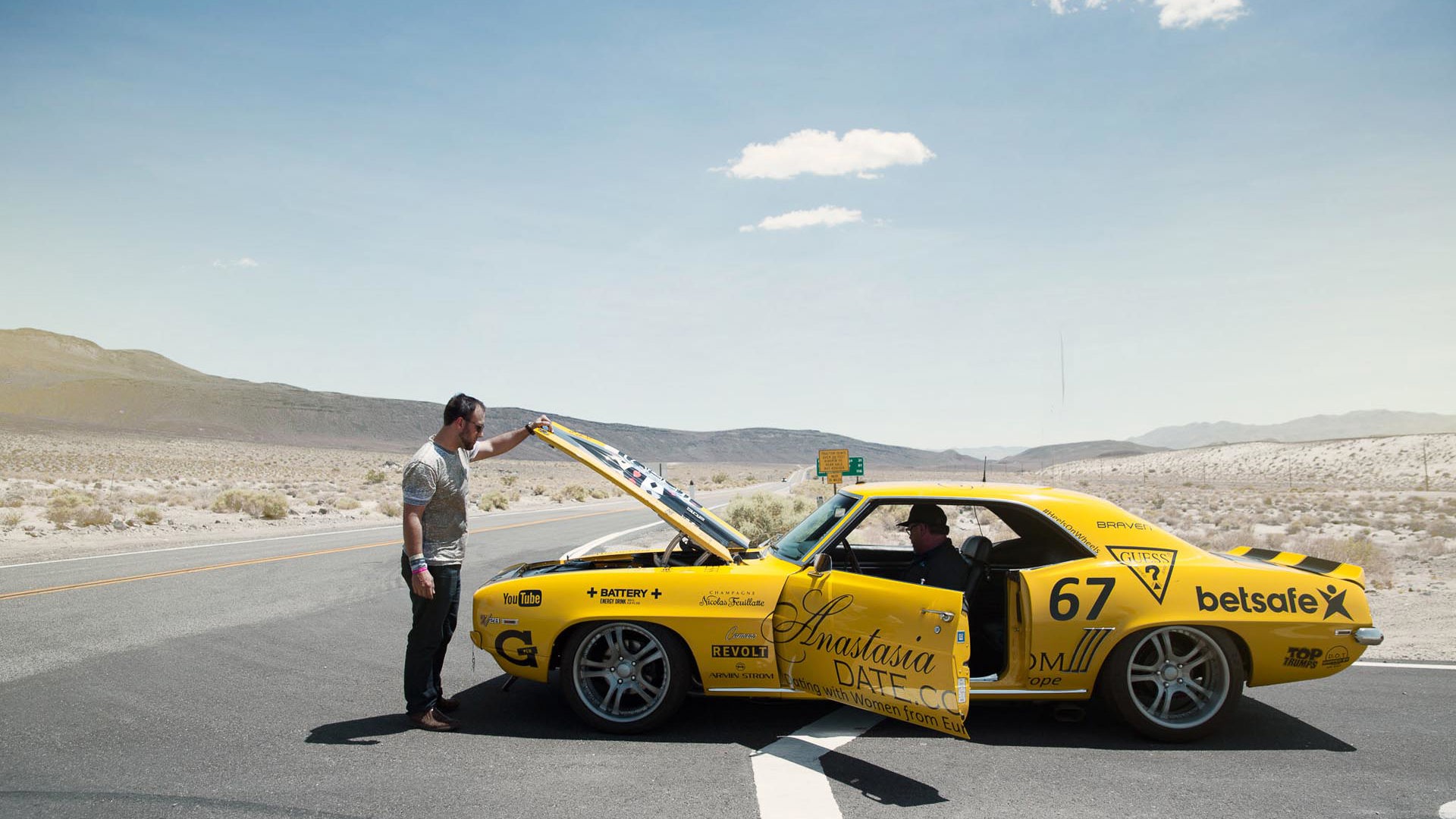When the vast majority of us think of emergency preparedness for our vehicles, we’re thinking winter, where succumbing to hypothermia if trapped in our cars is a very real possibility, and where treacherous road and weather conditions increase our odds of being stuck or involved in a collision.
In reality, automotive emergencies are only slightly less likely to happen when the weather is nice and warm, as the higher temperatures and extended travel of the summer months (often laden down with summer toys, camping gear, or just additional passengers) conspire to even the odds that we’ll experience a breakdown.
Let’s have a look at a few ways to prevent, prepare for, or simply deal with several possible summer emergencies.
Prevention
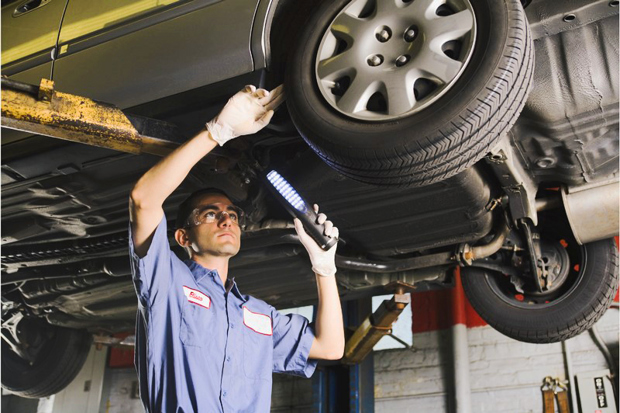
Regular vehicle maintenance that includes inspections by qualified technicians is the first line of defence against breakdowns and failures.
We all know that cold weather affects our vehicles and their components. The cold reduces battery output, thickens fluids, makes stuff brittle, and reduces fuel volatility, leading to more difficult starting conditions. Ice and snow build-up, window fogging, and wiper/washer freezing are all familiar issues.
You may be surprised then, to learn that summer is actually a prime time for outright battery failure, as automotive batteries break down chemically and physically in hot temperatures (you’ll often find that batteries located in the engine compartment are insulated for this reason). The condition and capacity of your battery should be checked at least twice per year.
Hot weather brings other challenges. Your cooling systems – yes, systems – will have their work cut out for them in the warmer temperatures. The radiator and coolant are the primary cooling system, and the coolant level and quality (which is not always obvious visually) should be inspected, along with the condition of the drive belts, hoses, radiator, and the function of the rad fan(s).
Nearly all automatic transmissions have some form of external cooler, usually built into the radiator. Leaking or badly corroded lines to and from the cooler could fail under summer stress. Same goes for external engine oil coolers, should your vehicle be so equipped.
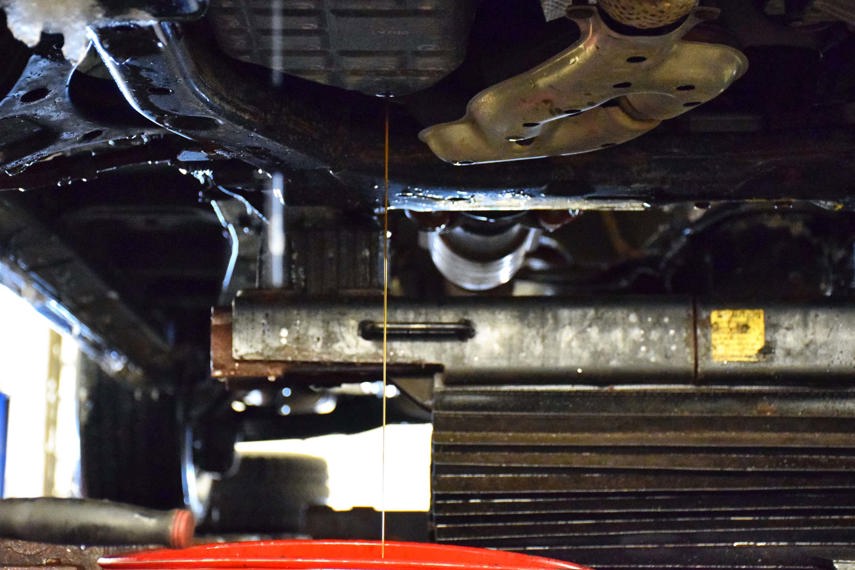
The use and regular replacement of a good-quality engine oil of the correct viscosity and specification should be a year-round thing; it’s just as critical in high temperatures as when it’s freezing out. Many modern engines consume oil, so the level should be checked regularly.
Excess demand in and of itself shouldn’t cause air conditioner failure, though it does stress and wear the compressor, but having a carload of people and pets sweltering is no fun, so any noticeable reduction in performance should be investigated well prior to any planned family trips. Something as simple as a clogged cabin air filter can appreciably affect cooling. Air conditioning refrigerant is not a consumable, so a loss of refrigerant indicates that the system is leaking – and it is not legal to simply “top it up”. (And at all costs, avoid the use of DIY alternative refrigerants or sealant, both of which can cause serious, costly system damage while seldom correcting the actual problem.)
Tires deserve much greater attention than they typically receive. Temperature is a critical factor for tires, with excess heat breaking down the rubber and even the structure of the tire itself. Proper inflation is a must – use the sticker in the door jamb to determine the correct pressures for your application. If you’ve got to err (sorry), over- (up to the maximum listed on the sidewall) is vastly preferable to under-inflation.
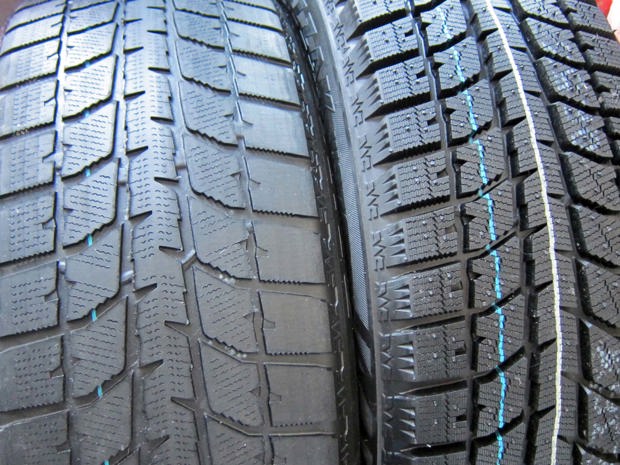
Wear is an obvious concern: a tread depth of 2/32" is the legal minimum, however 4/32" is generally accepted to be the point at which hydroplaning becomes a major risk and replacement is strongly advised.
Age and condition of the tire matter too. Tires with abnormal bulges (small sidewall irregularities are normal), splits/damage, or substantial cracking anywhere in the tread or sidewall could fail unexpectedly and catastrophically.
There’s no mandatory maximum age, but tire companies and automakers alike suggest that tires should be replaced at 6–10 years of age regardless of wear and condition. With many of us in this part of the world sharing wear between winter and summer tires, I’m inclined to go with 10, provided the condition of the tires is inspected regularly for any of the aforementioned concerns. The age is found in the DOT code stamped into the sidewall – the last four digits indicate week of year and year (e.g. “3915” = the 39th week of 2015).
Preparation
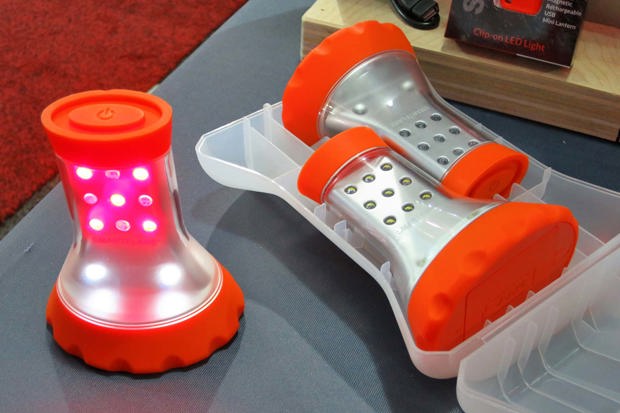
Looking after your car and staying on top of its maintenance can’t prevent everything. Fortunately, the safety kit that you put in your vehicle for the winter should serve its purpose during the warmer months too, though you aren’t as likely to need a toque or gloves.
What? You don’t already have one? Truthfully, most people don’t. The zombies will eat them first.
Ready-made kits are available at many stores, including Canadian Tire, Costco, and Walmart, but keep in mind that you may wish to supplement them accordingly, depending on your available space, what you already normally carry (I’ve kept a flashlight and multi-tool in my glovebox and booster cables and tow straps in my trunk for years), and your specific situation, such as scope of travel. A vehicle used solely for short-distance commuting in an urban environment versus one regularly travelling between, say, Edmonton and Fort McMurray will have different needs. That said, even for the former, if travel is in your plans, your kit needs to expand to reflect that.
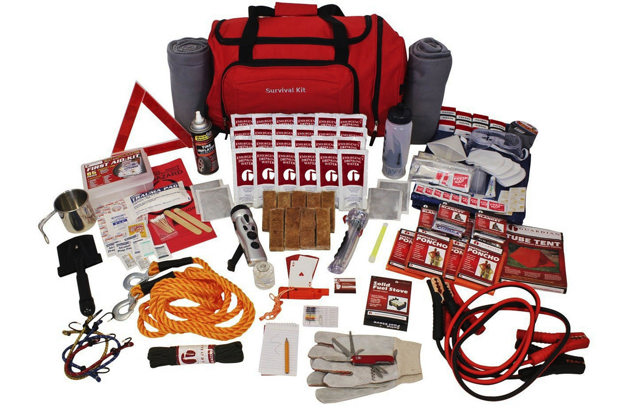
Here’s a list of suggested items to keep in your vehicle at all times. The last four are less critical for the urban commuter car but could still prove valuable:
• Booster cables
• Reflective warning triangles or flares; a reflective vest is a good idea
• First aid kit (bandages, alcohol wipes, gauze pads, medical tape, scissors, tweezers)
• Blanket (for first aid item as well, not just for cold), foil type if space is tight
• Flashlight, the wind-up type avoids dead batteries
• Basic tool kit (Phillips and slot screwdrivers, pliers, knife, etc.) and/or multi-tool
• Tire pressure gauge
• Whistle (for attracting help or signalling)
• ABC-rated fire extinguisher
• Maps
• Candle, waterproof matches, and a deep tin to safely burn the candle in
• Granola or energy bars
• Water (in plastic bottles, replaced every 6 months); a collapsible empty container and chlorine tabs also very handy
Additionally, an old cell phone with charger can be used to make 911 calls even without a plan or SIM card, tow straps are handy if you know the correct way to use them, and you’ll appreciate having work gloves and rags even if you just have to change a tire. For the colder months, an old jacket and some additional warm outerwear could prove life-saving, and you never know when a folding shovel could prove handy.
Handling Summer Driving Emergencies
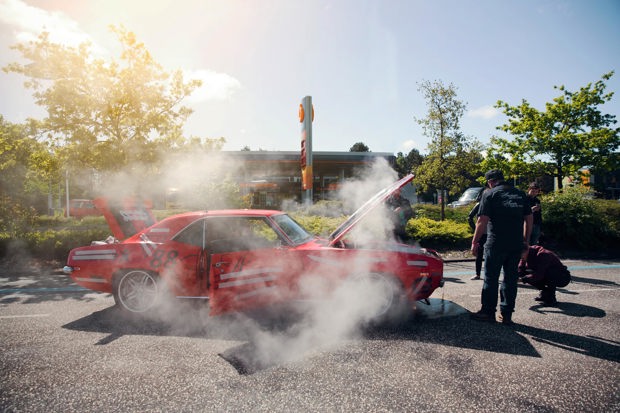
Beyond breakdowns, flat tires and collisions, summer and its high-energy weather can create emergencies that you may have to address on the fly.
One such obvious summer emergency is engine overheating, normally indicated by a climbing temperature gauge or warning light. Turn off the air conditioning to reduce the thermal load on the cooling system, reduce your speed if you’re towing or climbing a hill, and if those steps prove ineffective, safely pull over and allow the vehicle to idle with the heater on full hot. If after a short period of time it’s still overheating and/or steam is visible, shut the vehicle off, and do not attempt to open the rad cap until the vehicle has cooled completely (this could take an hour or more).
One common misconception is that turning the heater on full hot will cool the engine on its own; it won’t, but it will potentially buy you some time and/or assist the cooling system. A note: if the heater is set full hot but little to no heat is coming out, you have probably lost a substantial amount of coolant and may be causing severe engine damage. Pull over and shut the motor off as soon as you can.
The weather itself can be the emergency. Driving in heavy rain can be dangerous, and your best bet – if possible – is to pull over into a parking lot, side street, or well off the highway at the nearest exit.
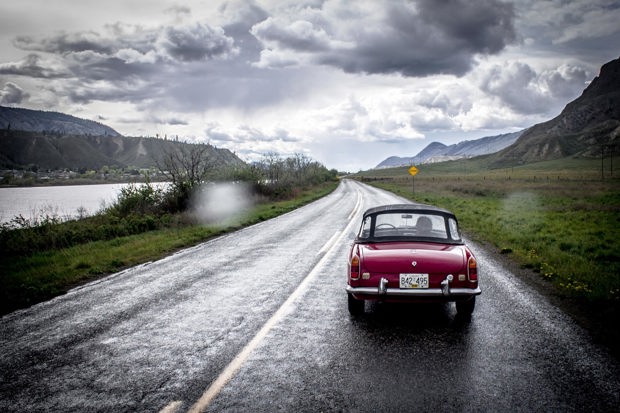
Realistically, those opportunities won’t always exist, so make sure that your full exterior lighting is on (and do not use your high beams), slow down, and leave additional space between you and the car ahead. Do not use cruise control, even the adaptive type. Treat the traction level as if you’re driving on snow, with no large or sudden braking or steering inputs – hydroplaning can easily cause a loss of control. Pulling over on the side of the road should be considered an absolute last resort, as it puts you directly in the line of fire for any other motorists that lose control or simply misjudge the road’s edge – in such cases, make sure your hazard lights are on.
Some low-lying areas and floodplains may see roadways being covered in water, even if it is not currently raining at that location. Water crossings are best avoided, as they put the vehicle and its occupants at risk, not only from direct water exposure or drowning, but from hidden hazards that may even include roadbeds already swept away or weakened by the water.
Should no alternative exist (and waiting it out or turning around are both excellent potential alternatives), and if the depth can be ascertained (one way is by stopping and watching other motorists’ crossings), most vehicles will tolerate short stretches of standing water up to the bottom of the doors. Obviously, this is not universal, and water will destroy an engine if even a small quantity is ingested into the air intake, so be aware of the potential consequences beforehand.
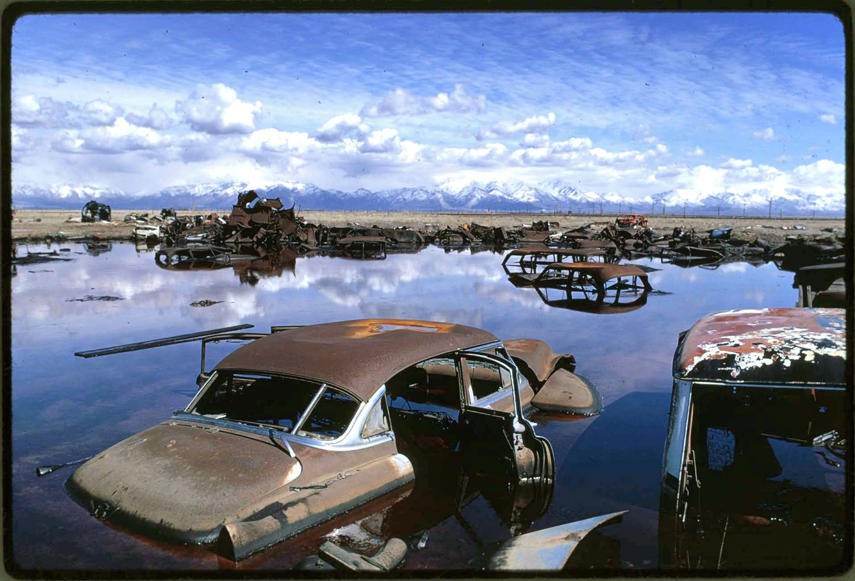
Still determined? Proceeding slowly – 5–6 km/h, roughly walking speed – should create a bow wave that will reduce water depth in the engine compartment. Faster speeds will only force water higher into the engine compartment, greatly increasing the risk of damage and stall-out. Do not follow directly behind another vehicle in case it stalls (forcing you to stop mid-crossing), and try to use the additional height of the crown in the centre of the road to your advantage. Maintain a steady speed until completely clear of the water, and once clear, dry your brakes by applying them gently several times.
Moving water is a different animal entirely. More than 10–15cm of flowing water is enough to sweep a vehicle away, and for this reason, any crossing of moving water outside of designated fords should be avoided at all costs.
While not all that common in Canada, road trips to the south could expose you to one additional warm weather hazard: tornadoes. YouTube videos and TV coverage suggest that underpasses are safe havens. They are not. The US National Weather Service advises motorists to drive away from the storm if possible; if traffic, road conditions, or other factors prevent that, it is recommended that the vehicle be abandoned in favour of sheltering in any available building.
If neither option exists, take cover in a low area, or, failing any other alternative, seat-belt yourself into your vehicle while keeping your head below the window-line and covered if possible.
